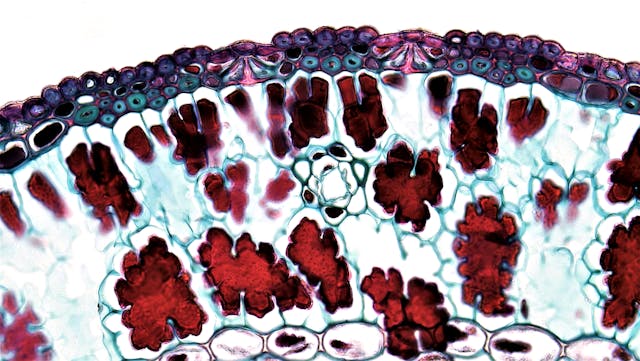Introduction
Vascular disease, encompassing conditions affecting the blood vessels, represents a significant global health challenge. Atherosclerosis, the underlying process of plaque buildup in arteries, contributes to heart attacks, strokes, and peripheral artery disease, leading to substantial morbidity and mortality. While lifestyle modifications remain cornerstones of prevention, recent years have witnessed exciting breakthroughs in our understanding and management of vascular disease, offering new hope for protecting this vital lifeline of our circulatory system. These advancements range from novel diagnostic techniques to targeted therapies, all aimed at reducing the risk and impact of these devastating conditions. This article explores some of the key developments paving the way for a healthier future.
1. Advanced Imaging Techniques for Early Detection
Early detection is crucial in mitigating the progression of vascular disease. Traditional methods often relied on symptoms that appeared only after significant disease progression. However, advancements in medical imaging are revolutionizing early detection. High-resolution computed tomography (CT) angiography and magnetic resonance angiography (MRA) now allow for detailed visualization of blood vessels, identifying subtle abnormalities like plaque buildup and vascular inflammation even before the onset of clinical symptoms. This allows for timely intervention, potentially preventing or delaying major cardiovascular events.
The development of advanced image processing algorithms further enhances the diagnostic capabilities of these techniques. These algorithms can automatically quantify plaque characteristics, such as size, composition, and vulnerability to rupture, providing clinicians with more precise risk stratification and individualized treatment plans. This move towards personalized medicine promises to optimize preventive strategies and improve patient outcomes significantly.
2. Biomarker Discovery and Risk Stratification
Identifying individuals at high risk for vascular disease is critical for preventive efforts. While traditional risk factors like age, smoking, and high cholesterol remain important, recent research has focused on discovering novel biomarkers that can more accurately predict an individual’s risk. These biomarkers, detectable in blood samples, reflect underlying inflammatory processes or cellular damage associated with atherosclerosis development.
For instance, circulating microRNAs, small RNA molecules involved in gene regulation, are showing promise as potential biomarkers. Their levels can be correlated with the severity of atherosclerosis and the risk of cardiovascular events. Similarly, research is exploring the roles of inflammatory cytokines and other molecules in predicting vascular disease risk. The identification and validation of these biomarkers will lead to more refined risk stratification, allowing for targeted interventions in individuals most likely to benefit.
3. Targeting Inflammation: Novel Therapeutic Approaches
Chronic inflammation plays a central role in the pathogenesis of atherosclerosis. This has led to a surge in research exploring anti-inflammatory therapies for vascular disease prevention. Beyond traditional approaches like statins, which primarily focus on cholesterol management, researchers are investigating novel agents that directly target inflammatory pathways.
Canakinumab, a monoclonal antibody targeting interleukin-1β (IL-1β), a pro-inflammatory cytokine, has shown promise in reducing cardiovascular events in high-risk individuals. Further research is underway to explore the efficacy of other anti-inflammatory therapies, including targeted inhibitors of other inflammatory signaling molecules. This focus on modulating the inflammatory environment offers a novel approach to preventing the initiation and progression of atherosclerotic plaques.
4. Lifestyle Interventions: Redefining Prevention
While medical breakthroughs are crucial, lifestyle interventions remain the cornerstone of vascular disease prevention. However, the approach to lifestyle modification is evolving, moving beyond simple recommendations towards personalized and comprehensive strategies. This involves a more detailed assessment of an individual’s lifestyle habits, coupled with tailored interventions designed to address specific needs and challenges.
Integrating technology into lifestyle interventions is showing significant potential. Wearable devices that track physical activity, sleep patterns, and even stress levels can provide valuable insights into an individual’s health behavior, empowering both individuals and healthcare providers to create more effective strategies for promoting physical activity, dietary changes, and stress management. This personalized approach emphasizes long-term adherence, a crucial factor for sustained improvements in cardiovascular health.
5. Gene Editing and Regenerative Medicine
The long-term goal of vascular disease prevention is not only to delay disease onset but also to potentially reverse existing atherosclerotic lesions. Emerging technologies in gene editing and regenerative medicine offer exciting prospects in this area. While still in early stages of development, gene editing techniques hold the potential to correct genetic defects contributing to vascular disease susceptibility, potentially preventing the disease from developing in the first place.
Regenerative medicine approaches aim to promote the repair and regeneration of damaged blood vessels. These strategies include stimulating the growth of new blood vessels (angiogenesis) or using stem cells to replace damaged tissue. Although these approaches are currently under investigation, they represent a paradigm shift in the treatment of vascular disease, moving away from a solely preventative strategy towards a potential curative approach.
Conclusion
The fight against vascular disease is continuously evolving, with significant breakthroughs emerging in prevention and treatment strategies. Advances in imaging, biomarker discovery, novel therapeutics, and lifestyle interventions are all contributing to a more comprehensive and personalized approach to protecting this vital lifeline. While challenges remain, the ongoing research and development in this field offer significant hope for reducing the burden of vascular disease and improving cardiovascular health worldwide. The future promises even more refined diagnostic tools, targeted therapies, and a deeper understanding of the underlying mechanisms of this prevalent disease, leading to more effective preventive strategies and potentially life-saving treatments.

